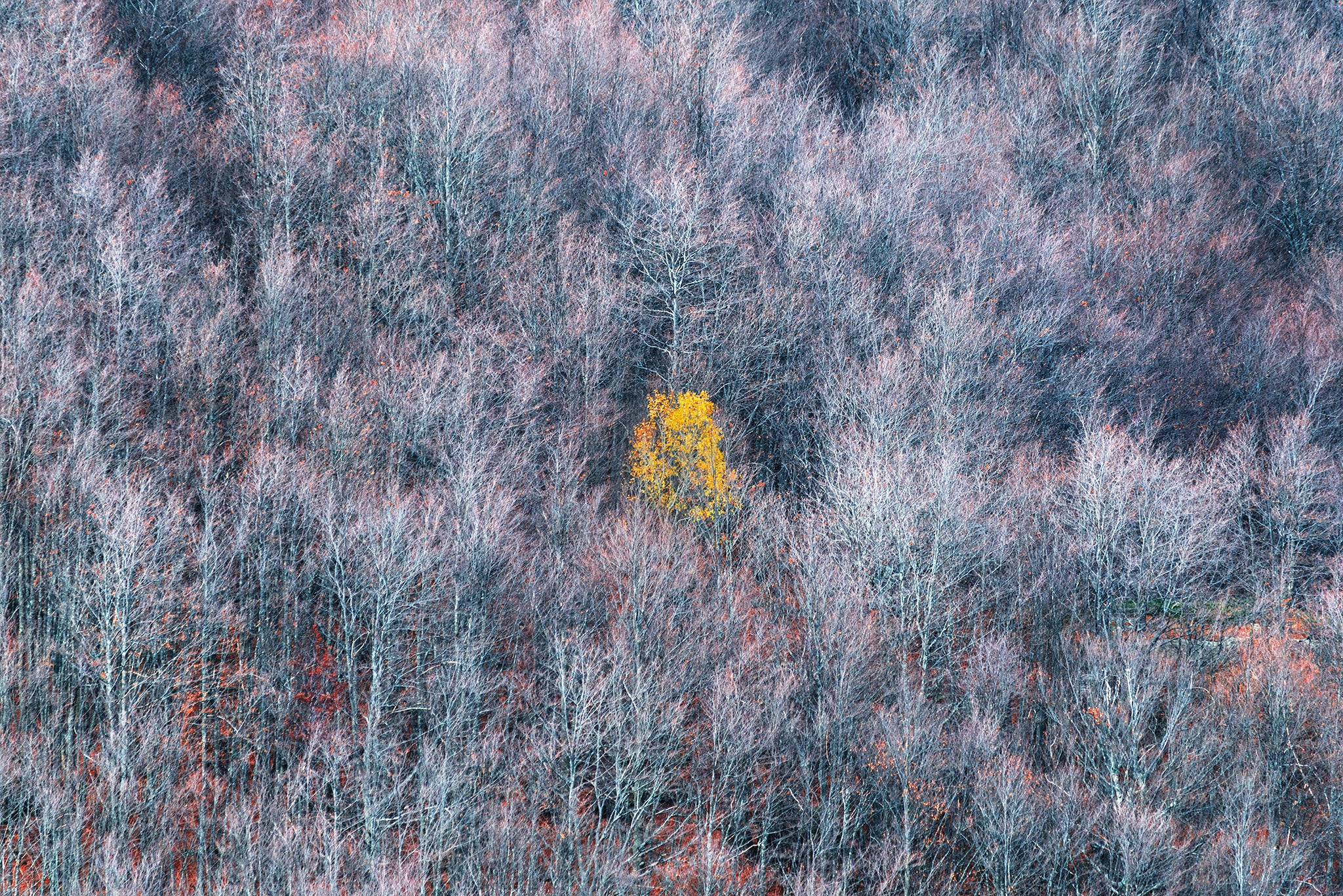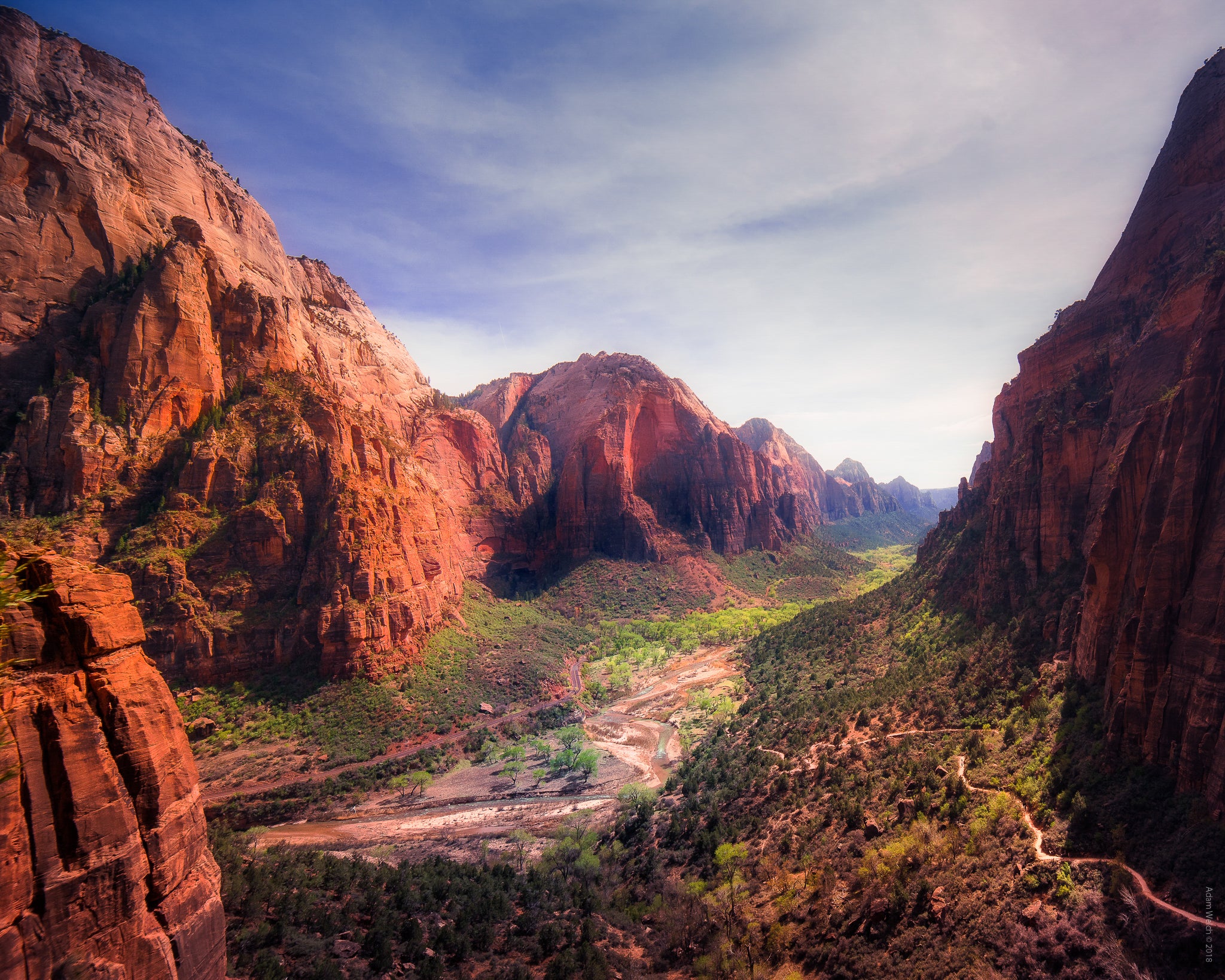
If waterfall photography is your thing, then you've certainly come to the right place! The waterfalls of Iceland are truly unique in this world, and dare we say that there is nothing more romantic on a warm summer's day than to hike up to a waterfall with a blanket and a lunch box with your lover, lie in the soft grass and listen to the water hammering away at the rocks.
- Find The Best Time to Visit Iceland for Photography
- Discover The Ultimate Guide to Animals in Antarctica
- Check out this article on Understanding Metadata | EXIF for Landscape Photography
Whether you like to photograph small waterfalls, thundering giants or hidden Highlands waterfalls that are off the beaten track, Iceland is brimming with multiple cascades. Here are our top picks of the best waterfalls for photography in Iceland.
The Blue One
It's a funny feeling visiting Hraunfossar (or 'lava waterfalls') which are located in Hvítá, close to Barnafossar (children's waterfalls). Faces in the rocks and voices in the water... this place has a vibe. Hraunfossar, also known as Girðingar or 'fences', is located close to Borgarnes on road no. 518. It's about a 90 minute drive from Reykjavík, making it quite accessible for those taking a day trip around the Golden Circle or making their way northwest to the Snæfellsnes Peninsula.
 Hraunfossar in Autumn. Photo by: 'Iurie Belegurschi'.
Hraunfossar in Autumn. Photo by: 'Iurie Belegurschi'.
Hraunfossar is not a typical waterfall. Rather, it is a series of springs that emerge forth as rivulets from the porous basaltic remains of the Hallmundarhraun lava flow, slightly west of the Langjökull glacier. The result is a number of cascades tumbling into the Hvítá river below, making for a very pretty scene.
Hraunfossar is extremely picturesque, particularly in autumn, when it is surrounded by the earthy hues of golden, red and orange foliage. It also stands out for the colour of its amazing water, which is extremely blue and clear.
The Hard to Reach One
Although situated on the Golden Circle, Brúarfoss waterfall is one of the lesser-visited locations in Iceland as it is quite well hidden off the beaten track. It takes up to an hour to hike through thick bush and mud to get there but when you do, you'll be rewarded by electric blue glacial water that brims with mystery.
 Bruarfoss. Photo by: 'Iurie Belegurschi'.
Bruarfoss. Photo by: 'Iurie Belegurschi'.
The name Brúarfoss translates to 'bridge falls' in English, which is quite fitting, as a large bridge crosses over it, allowing photographers quite an amazing view from overhead.
In recent times, there has been quite a lot of discussion about access to Brúarfoss, which was initially restricted by the landowners due to people trampling through private property and causing environmental damage to reach it. The correct track to get to this waterfall may be located by the official parking lot right next to the Brúará river, situated between Laugarvatn and the hot springs area of Geysir. It is a two-hour return trip that will have you meandering right by the shores of the river, through farmland and lots of mud!
If you choose to visit this spectacular waterfall, then please be respectful of the nature and the surrounding properties. Keep to the designated official track and be sure to pack out anything that you might bring in.
The High One
Although the Icelandic Highlands are largely barren and unforgiving, at certain times of the year they can resemble a veritable oasis, swathed in lush green moss and overflowing with beauty.
 Haifoss, Photo by: 'Iurie Belegurschi'.
Haifoss, Photo by: 'Iurie Belegurschi'.
On the edge of the Highlands is Iceland’s fourth highest waterfall, known as Háifoss or the Tall Falls. When it was first discovered, it was actually thought to be the highest waterfall in Europe! Although it’s taken a bit of a step backwards in the record books since then, Háifoss is still impressive, standing at 122 metres high. It is situated in the Fossá river, which is a spring water tributary of Iceland’s longest river, the glacial river of Þjórsá.
Although you can hike down to the bottom of the waterfall in the valley, the best spot to photograph Háifoss is from the top, where the dizzying heights can take hold and give you a bit of vertigo! The landscape here is very diverse so it’s worth taking your time to explore. You’ll need a good 4x4 vehicle though, unless you plan to hike the 14km back and forth for this spectacular view.
- See also: Háifoss is More Than One Waterfall
The Ones We Can't Pronounce
 Sigöldugljúfur Canyon. Photo by: 'Iurie Belegurschi'.
Sigöldugljúfur Canyon. Photo by: 'Iurie Belegurschi'.
Sigoldywhat? Sigöldugljúfur! Try saying that one ten times fast. This is a beautiful hidden canyon in the Icelandic Highlands, where many small waterfalls tumble over the edge of a cliff into the beautiful reflective waters below. It's particularly beguiling beneath the warm light of the Midnight Sun, in the late hours of the night or wee hours of the morning during summer.
This waterfall can be difficult to access though and requires a bit of a hike. If you're out near Landmannalaugar and you have some time up your sleeve, then it's well-worth a visit for the dizzying views alone! It is located by the mountain road F208. Just be sure to stand clear of the cliff edges to the canyon for your own and others' safety.
The Majestic One
During winter in Iceland, some waterfalls can get particularly frozen, like the majestic Aldeyjarfoss waterfall in the north! This Highlands waterfall features an amazing contrast between the black basalt columns surrounding it and the white cascading water, which freezes into a pristine white layer of ice and snow along the cliff face. With a turbulent 20 metre drop from the ancient Báðardalshraun lava field into an icy pool below, this waterfall makes for an epic winter location for serious landscape photography enthusiasts!
 Aldeyjarfoss. Photo by: 'Iurie Belegurschi'.
Aldeyjarfoss. Photo by: 'Iurie Belegurschi'.
For photographers, this incredible waterfall is a delight to photograph, especially with a wide angle lens to emphasise the sheer size of it and the beautiful pool of water below. Standing above the waterfall within mounds of snow, it’s difficult not to feel overwhelmed by the sheer beauty of nature.
The trick here is to take a number of photographs which you’ll be able to stitch together later to make a panorama, otherwise you’ll end up cutting off the edges of the pool. If you have an ultra wide angle lens though, then you might be able to capture the entire waterfall within one shot!
The Beautiful One
Svartifoss is the most beautiful waterfall you will find in Iceland. Its name means ‘the black waterfall’. The name comes from its famous black basalt columns that are exceptionally unique in the Icelandic landscape and has inspired many artists such as the State Architect of Iceland, Guðjón Samúelsson, who used the idea of the black columns in the design of the city church Hallgrímskirkja and the National Theatre, Þjóðleikhúsið.
Seeing Svartifoss for the first time, especially during winter, can leave a person speechless. This is a waterfall that is breathtakingly beautiful, surrounded by pitch black basalt columns that are as sharp as knives, contrasting with the white fizzling water that cascades forth and pounds onto the frozen rocks beneath.
Svartifoss is located within the Skaftafell Nature Reserve, which is a part of the newly established Vatnajökull National Park in southeast Iceland. There are short and easy trails that lead to the waterfall Svartifoss from the camping grounds, and the walk should take you around 1 hour to complete. It's a lovely place to bring a packed picnic lunch!
The Special One
Seljalandsfoss is a very special place and different from other waterfalls in Iceland for the fact that it is one of only a few waterfalls that you can actually walk behind. Be careful though, because that can be a tricky little adventure to pull off. The trails behind this waterfall can be slippery, and if it's windy, then you can get soaked by the ice cold water. So be sure to dress appropriately and do not be afraid of getting wet!
But then again, who doesn't enjoy a little bit of a challenge?
 Seljalandsfoss by the Midnight Sun. Photo by: 'Kaspars Dzenis'.
Seljalandsfoss by the Midnight Sun. Photo by: 'Kaspars Dzenis'.
It is safe to say that Seljalandsfoss is aggressively beautiful. Beholding it in all its magnificence and valour inspires an excitement that we can only compare to the feeling that you get in your stomach moments before you open a gift. It is truly a sight to behold. The water plummets forth from a drop of 60 metres, catching the light of the sunset as it falls. The best place to photograph it is from behind the cascade itself, where you'll be able to take a panorama of several shots to capture the entire scene in all its glory. If you happen to be there at the right time during summer, then you'll be able to photograph Seljalandsfoss lit up by the golden rays of the Midnight Sun, just like a blazing fire.
The Game of Thrones One
Kirkjufell is one of the most beautiful landmarks in Iceland and is said to be the most photographed mountain of all! Standing at 463 metres above sea level, it is a stunning focal point on the Snæfellsnes peninsula near the town of Grundarfjörður. This stunning mountain has a lovely walking trail all around it and you can even climb up to the top, where you may find yourself unearthing an avian fossil or two. However, Kirkjufell is most famous as a filming location for the popular HBO series, 'Game of Thrones', in which it was portrayed as the 'Arrowhead Mountain' (Season 7, Episode 6).
 Kirkjufellsfoss. Photo by: 'Iurie Belegurschi'.
Kirkjufellsfoss. Photo by: 'Iurie Belegurschi'.
Kirkjufell is particularly photogenic throughout the autumn months in Iceland, when the foliage surrounding the mountain takes on warm and earthy hues. However, it’s just as magical during winter with the Northern Lights dancing overhead or in summer, when the passionate colours of sunset sweep across the sky!
The most common angle to photograph Kirkjufell is from its base, where you will find the Kirkjufellsfoss waterfall. This very special waterfall channels the glacial melt water of the Snæfellsnes mountains towards the fjord below. There is a trail that will take you right to the very spot where everyone takes their shots and it's an easy one to follow!
The Famous One
Gullfoss is probably the most well known waterfall in Iceland and a popular tourist attraction. Situated on the Golden Circle, it is protected by preservation laws, but during the first half of the 20th century, some shady people without much care for the natural beauty of their country wanted to use Gullfoss to generate electricity. Thankfully, a brave young woman threatened to throw herself into Gullfoss' watery embrace, which thwarted those plans from ever being carried out.
 Gullfoss in Winter. Photo by: 'Iurie Belegurschi'.
Gullfoss in Winter. Photo by: 'Iurie Belegurschi'.
These days, it is quite amazing to see the thundering waters of Gullfoss – which tumble forth at 140 m³ of water per second – spilling from the cliffs on a sunny day while a cacophony of screaming birds flies over your head. It's even more special to photograph it at night, when the skies are lit by the green dance of the Northern Lights.
About the author: Serena Dzenis is a landscape photographer based in Iceland. You can find more of her work on her website or by following her on Facebook and Instagram.
Have you got a penchant for photographing waterfalls? Check out our 5-Day Summer Photo Tour, which will take you to all the magnificent waterfalls of Iceland's magical South Coast!












